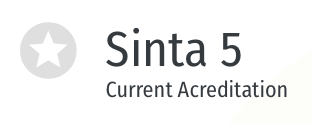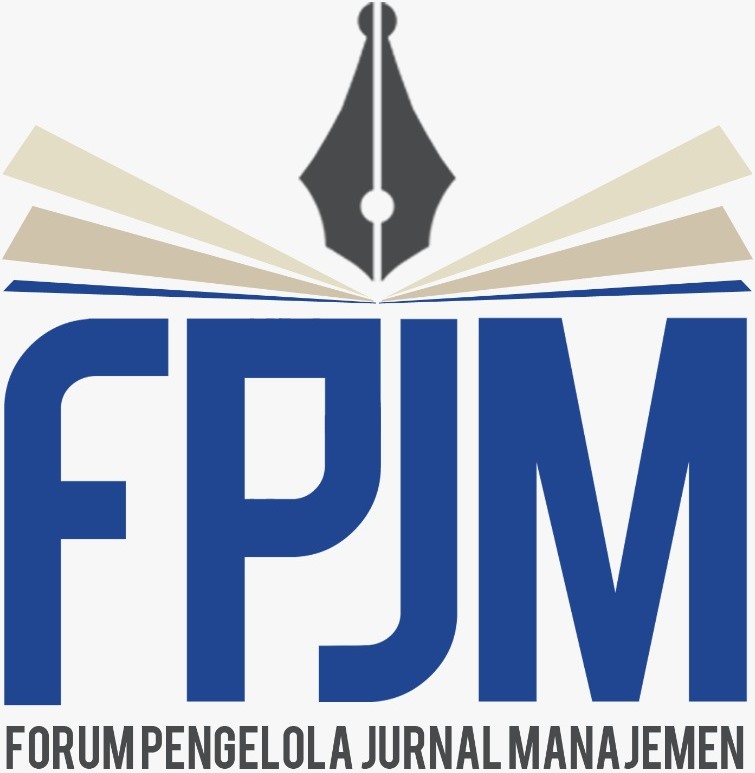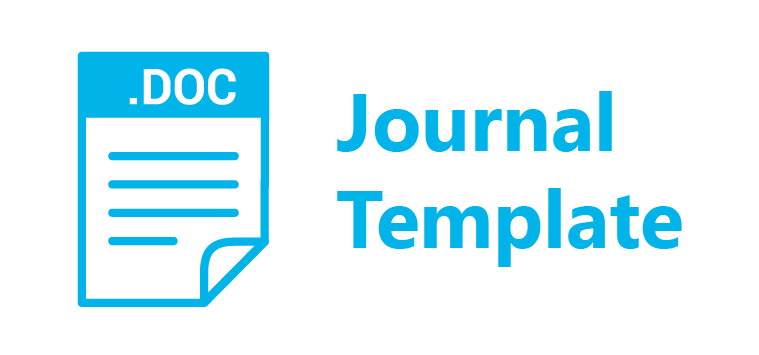In Cooperation With :
Submissions
Submission Preparation Checklist
As part of the submission process, authors are required to check off their submission's compliance with all of the following items, and submissions may be returned to authors that do not adhere to these guidelines.- The submission has not been previously published, nor is it before another journal for consideration (or an explanation has been provided in Comments to the Editor).
- The submission file is in OpenOffice, Microsoft Word, or RTF document file format.
- Where available, URLs for the references have been provided.
- The text is single-spaced; uses a 12-point font; employs italics, rather than underlining (except with URL addresses); and all illustrations, figures, and tables are placed within the text at the appropriate points, rather than at the end.
- The text adheres to the stylistic and bibliographic requirements outlined in the Author Guidelines.
Author Guidelines
International Journal of Digital Entrepreneurship and Business (IDEB) is an open access journal. The term open access gives the right of readers to read, download, distribute, copy, print, search, or link to the full texts of the articles free of charge.
Authors retain copyright and grant the journal right of first publication, allowing others to share the work with an acknowledgment of the work's authorship and initial publication in this journal. International Journal of Digital Entrepreneurship and Business applies the Creative Commons Attribution (CC BY) 4.0 (this license requires that reusers give credit to the creator. It allows reusers to distribute, remix, adapt, and build upon the material in any medium or format, even for commercial purposes) to all manuscripts to be published.
Policy of Screening for Plagiarism
Papers submitted to IDEB will be screened for plagiarism using Turnitin plagiarism detection tools. Papers leading to plagiarism will be immediately rejected.
Payments for Publication
International Journal of Digital Entrepreneurship and Business (IDEB) welcomes article submissions and does not charge a publication fee.
About Styles
The following writing and referencing rules are to be taken into consideration.
Click here for IDEB Manuscript Template
The articles must not have been published elsewhere previously. Manuscripts accepted for publication must be written in English or Bahasa Indonesia. Articles are published bilingually in our journal; hence the manuscripts will be translated (free of cost) from English to Indonesian language and vice versa.
Title
The title of the article must be written in capital letters, using font size 14 and bold. One line space must be left after the title. The name and surname of the author(s), their title, and the institution they work for must be written. The title should attract the reader’s attention and justify the contents of the research article. The title consists of 10 - 12 words
Number of Pages
The number of pages of the article must be at minimum 20, excluding the reference list. The whole work must be written in Times New Roman, font size 12. The subheading must be in bold, and the first letter of each word must be capital letters.
Format Style
All the text must be written using 1.15 line spacing, excluding the reference list (single line spacing). The article should generally consist of the following parts:
- Abstract,
- Introduction,
- Literature Review,
- Method,
- Results and Discussion
- Conclusion
Abstract
The abstract may be the only part of the paper people read. Try to give the readers concrete information and basic results to interest them. The abstract should probably be about two-thirds of a page. The language of the abstract must be clear and concise in one paragraph. The section explains the summary of the article. It should include the research objective, methodology, results and discussion, and conclusion. The abstract must be within 150 - 250 words. The abstract must not provide lengthy background information and have no reference to the figure, table, equation, or any reference either coming within or another article.
Keywords
Many people search for articles based on keywords. It is also good to think about the keywords. Important/specific words or phrases are found mainly in the title and abstract (5–7 keywords).
Introduction
You can start your section with an interesting research question. State how past research still needs to thoroughly answer the question or critical aspects of the research. The introduction exhibits previous studies (mini-literature) and provides a detailed definition of the importance of this study (motivate), and states the research objective.
The introduction must discuss the relevant journal article (with citation) relevant to this study and summarize the existing understanding of the problem statement (situate) to demonstrate novelty of the research. Situating and Motivating your paper is a very important step in organizing your paper and showing its contribution to readers
Literature Review
Show readers you know the critical papers in the field and area you are researching. Relevant discussion of the theory and evidence is clear, and a clear description of the development of the domain (in your area) and the evidence for your research question. The literature review should also address why your paper is needed and entering the field (being written) now.
The literature review represents the theoretical and/or scientific concepts. In this section, the author(s) are encouraged to discuss the purpose of a literature review. The literature review can include the conceptual framework and development of a hypothesis for the underlying study.
Methods
Although there are occasionally good reasons to vary the order, it is usually good to present the data on the sample or population first. Try to provide as much helpful descriptive data as space permits and provide a summary table by including a correlation matrix with the means, standard deviations, and alphas of all independent, dependent, moderator, mediator, and control variables.
The methods should explain clearly how the research was carried out, such as data sources (where the data was collected, from whom the data was collected, and when the data was collected), techniques of collection (descriptions of the constructs and measures should be in order, generally consistent with literature review), and the processing.
The method must clearly describe the research design, its procedures, and how the data is analyzed.
Result and Discussion
Restate your hypotheses in the Results section (not word for word, just a restatement, then give your results for that hypothesis with very little discussion), then go to the following hypothesis. Do this one by one. Do not just list out a table that says “supported” or “not supported.” (Provide some brief explanation if the results turned out differently). No new ideas and few or no citations in the Results. Just your findings with very brief comments or clarification about them.
The result section objectively shows the presentation of the research's critical results without any interpretation using text, tables, and figures. The result section begins with text, presenting the critical finding and referring to the tables and figures. The figures must be precise and, where possible, highlight trends, patterns, and relationships. The result section must present how the author ensures the data's validity and reliability.
Highlight what we know that we did not know before. After considering the literature review and results, the discussion section shows a new understanding of the problem. The discussion should strongly connect to the Introduction.
The discussion section should also include contributions towards theory, empirical, practice, methods, and other (government policy, regulation, etc.) – where possible – for the underlying research, limitations providing critical judgment and the gap in the underlying research, and future research opportunities for future researchers.
Conclusion
The conclusion should have 1-2 paragraphs (try not to end with Limitations, those go in the previous section – end more positively). Tie everything together with an informative summary. The conclusion should be pretty well, such that people who did not read the whole paper can learn the basics of the paper by reading both the introduction (as an introduction for the set-up of the paper and its organization) and the conclusion (conclusion to state results clearly). Provide a clear message; if this article contains only one message, what message would that be?
References
References should only include books, articles, theses, and research reports in APA style. Guidelines for APA style used for in-text citations and references are available at http://www.apastyle.org. The reference must consist of 80% of relevant and recent primary sources (such as journal articles or conferences from the last 7 years). The reference must be written in APA style and using reference manager software (Mendeley, Zotero, etc.).
Few examples for reference: (Font 12, TNR, Line and Paragraph Spacing 1, hanging indent).
Choudhury, K. (2013). Service quality and customers’ purchase intentions: an empirical study of the Indian banking sector. International Journal of Bank Marketing, 31(7), 529–543. https://doi.org/10.1108/IJBM-02-2013-0009.
Frank, M. Z., & Goyal, V. K. (2009). Capital Structure Decisions: Which Factors Are Reliably Important ?, 1–37.
Gujarati, D. N., & Porter, D. C. (2009). Basic Econometrics. McGraw-Hill.
Hair, J. F., Black, W. C., Babin, B. J., & Anderson, R. E. (2010). Multivariate Data Analysis. Hair (7th, 2010).pdf. Pearson.
Wagner, M. (2013). “Green” Human Resource Benefits: Do they Matter as Determinants of
Environmental Management System Implementation? Journal of Business Ethics, 114(3), 443–456. https://doi.org/10.1007/s10551-012-1356-9.
In-Text citations
Use the name of the author(s) followed by the year of publication when citing references within the text and page number. For example:
- 1 author (Callan, 1998)
- 2 authors (Eggen & Kauchak, 2001)
- 3 or more authors (Ivanitskaya at al., 2002)
How to create a Reference List
- Single author:
- Amer, A. (2006). Reflections on Bloom’s revised taxonumy. Electronic Journal of Research in Educational Psychology, 4/8, 213-230.
- Bloom, B. S. (1956). Taxonomy of educational objectives, the classification of educational goals, handbook I: Cognitive Domain. New York, NY: David McKay Company.
- Callan, R. J. (1998). Circadian rhythm and the business person. International Journal of Value Based Management 11: 9–17.
- Forehand, M. (2005). Bloom’s taxonomy: Orginal and revised. In Emerging Persceptives on Learning, Teaching, and Technology. Retrieved 29 March, 2010 from http://eit.tamu.edu/JJ/DE/BloomsTaxonomy.pdf
- 2 authors:
- Biggs, J. B. & Collis, K. (1982). Evaluating the quality of learning: the SOLO taxonomy. New York, NY: Academic Pres.
- Eggen, P. & Kauchak, D. (2001). Educational psychology: Windows on classrooms. New Jersey, NJ: Merrill.
- Erden, M., & Akman, Y. (1996). Egitim psikolojisi[Educational psychology]. Ankara, Turkey: Arkadas Yayınevi.
- Minogue, J. & Jones, G. (2009). Measuring the impact of haptic feedback using the SOLO taxonomy.International Journal of Science Education, 31/10, 1359–1378.
- O’Neill, G., & Murphy, F. (2010). Guide to taxonomies of learning. UCD Teaching and Learning/Resources, Retrieved 01 November, 2010 from http://www.ucd.ie/t4cms/ucdtla0034.pdf
- 3 or more authors:
Ivanitskaya, L.; Clark, D.; Montgomery, G. & Primeau, R. (2002). Interdisciplinary learning: Process and outcomes. Innovative Higher Education, 27/2, 95-111.
Privacy Statement
The names and email addresses entered in this journal site will be used exclusively for the stated purposes of this journal and will not be made available for any other purpose or to any other party.











